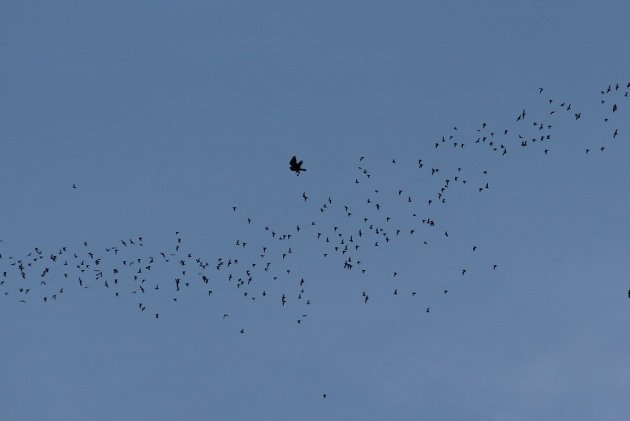
Many years ago, when I was a young and stupid Masters student in Conservation Biology, I was given the opportunity to pick a location for our thesis project from many exciting projects around the world. There were opportunities to go to far flung places like the islands of the Pacific or the coast of Canada or the Yorkshire Dales… Anyway, as I was obsessed by Africa at the time, I leapt at the opportunity to go to Namibia to collect samples of bat DNA for a biogeography project. It is hard to explain now, but at the time my conception of what that would involve was pretty easy to define. I would be going into caves, which were in my mind holes in the sides of cliffs, like you’d find in a good Far Side cartoon, and catch bats. Like I said, I was young and well, stupid, (as opposed to now when I’m old and, well…) but it didn’t strike me as hard. I remember going to a health and safety seminar and struggling to identify potential pitfalls. Maybe I’d trip on rocks walking to the cave? Who knew?
At any rate, an inhabitable cave conveniently located in a cliff just past a mild tripping hazard was not what I encountered. Instead of a hole in a cliff was a hole in the ground, about five metres deep and as wide as two bathtubs. Getting in required being lowered down by rope. Having reached the bottom of the hole it was necessary to squeeze through a gap that barely seemed to accept my lanky twenty something frame. And then… Well, lets see. Imagine a cavern, about twenty metres and maybe seven deep but only one wide. The cavern entrance opened up at the top and you had to climb down the crumbling cavern walls with your hands and legs jammed out. The cavern itself was devilishly hot, noisy from bats and, at the bottom, knee deep in guano. The sandsone walls were crumbling and as if to emphasise that point in a few places massive blocks of rock had fallen from the ceiling and had lodged halfway down. Oh, and the whole place stank of ammonia. Oh, and horrifying insect things were everywhere.
I’m not sure if I already was claustrophobic, or if the circumstances merely traumatized me to the point I became one, right there and then.
I managed half an hour, and spent the whole time convinced that I was going to die. I think we caught perhaps three bats. The next day we tried mist netting the cave entrance, and the day after I abandoned the project entirely. Fortunately, my supervisor was understanding (as indeed where the local scientists who had come to help me) and I switched to a project about grasshoppers. No caves involved.
This very long introduction serves as a guide to my mental state when presented with the opportunity to visit Gottamong Caves in Borneo. I have, for the most part, been able to avoid caves since that experience. This has typically not been a problem as there isn’t generally a great deal to see in caves that isn’t a horrifying bug or a cave fish, and really, I’m fine not seeing them. The closest I came to exploring a cave was diving in a wreck in Vanuatu a few years ago, and while I found the experience nerve-wracking, a combination of sheer fascination and nitrogen narcosis (the effect while diving of compressed nitrogen acting like alcohol – particularly to the decision making processes) kept me sane. Gottamong Caves had several things going for it which made the place a must do for us, but the cave was always going to be a problem.
For starters, the cave is surrounded by some rather nice forest. First off as we drove in was the Crested Serpent-eagle I’ve shown you before. Much more exciting was the Blue-crowned Hanging Parrot that shot past, followed, on the rather slippery path to the caves, by several Rufous-winged Philentomas. This species was a new species and genus for me, and a particularly attractive one that was a pleasure to watch as we wandered down the slippery walkway to the cave entrance. And then, there it was. The cave.
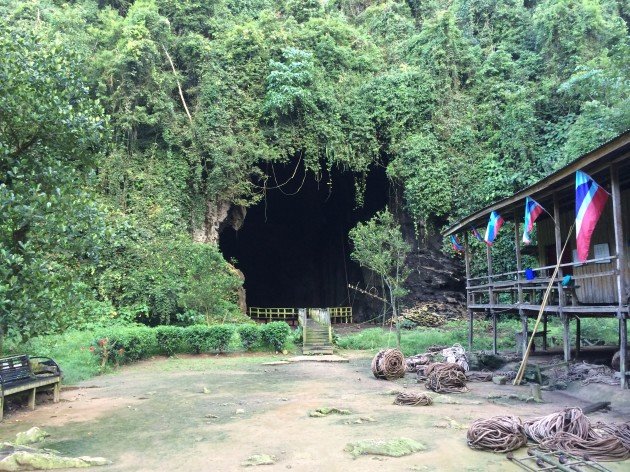 Hell has a wooden walkway for easy access
Hell has a wooden walkway for easy access
The cave’s main selling point from a birder’s perspective is that it is a nesting site for three species swiftlet, the Edible-nest Swiftlet, the Black-nest Swiftlet and the Mossy-nest Swiftlet. When a bird’s name lists the most distinctive feature of the species as being its nest you know you’re dealing with fairly difficult birds to identify, and as you might have guessed it, the best, no, make that the only way to tell them apart is on the nest. And this cave has lots of nests, so much so that there is a (sustainable) industry in collecting their nests for birds-nest soup.
The cave is also home to about a million Wrinkle-lipped Bats. And the guano from a million Wrinkle-lipped Bats. Oh, and the horrifying insect things that live on the guano of a million Wrinkle-lipped Bats. So as we moved into the caves on a convenient wooden walkway, as our lights moved around they revealed teaming scuttling things, like switching on the lights in the kitchen of hell. The cave was huge and the walkways hugged the walls with a massive pile of guano taking up the centre of the cave. High up there were smaller entrances to the cave where swarms of bats circled in the light. And there was the smell. But mostly there was shit and cockroaches and malevolent long legged centipede things.
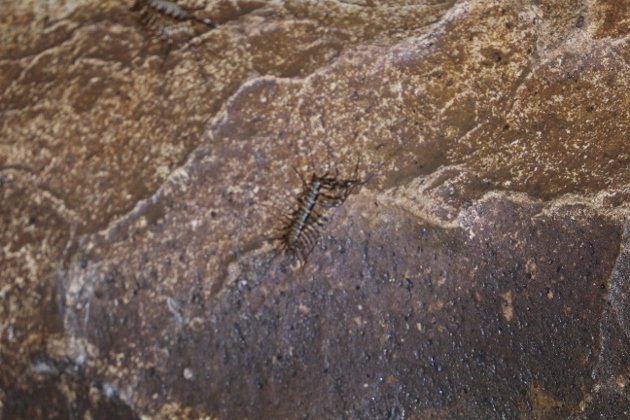 How many legs does this thing have? Why does it even exist?
How many legs does this thing have? Why does it even exist?
At two points in this endless demonic tour our guide pointed to some points far up in the cathedral of shit where indistinct shapes represented clustered nests of swiftlets. Between the near-tears, fogged up binoculars, fogged up glasses and gloom of the cave I managed to make out vague swiftlet-like shapes. I think. The Black and Mossy-nest Swiftlets were together in one place and the Edibles at the second. I can’t honestly say I could tell the nests apart. But I can say that I have seen, in one shape or another, these three species. It matters not a jot that I couldn’t say which was which or that fear is petty much my only real memory of the experience. I have ticked them, and I don’t care if you say otherwise. I have ticked them, and I never have to worry about these three miserable species again for as long as I live.
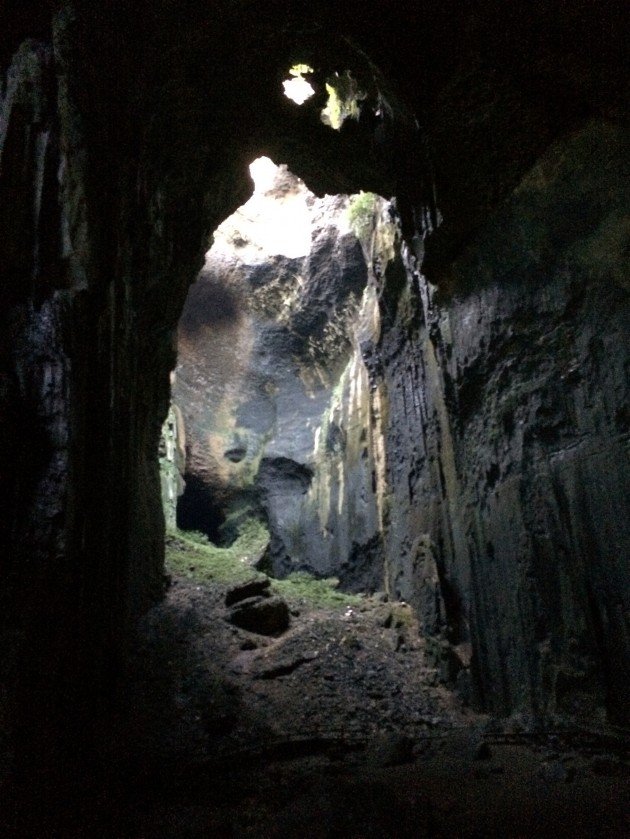 This is a terrible photo that I managed to take without dropping my phone or dying. Excuse the lack of focus.
This is a terrible photo that I managed to take without dropping my phone or dying. Excuse the lack of focus.
Things improved immeasurably once I got out of the cave. For starters, I was no longer in the cave. Then, as we walked back to the car park our guide froze and told us that the call we could hear was a Black-and-Crimson Pitta, a Bornean endemic. Fogged up as my bins where I managed to see this beautiful little bird. But things really picked up as we reached the car park and climbed a small hill to look back towards the cave mouth. It was getting towards dusk, and as the sun began to sink the million sodding Winkle-lipped Bats started leaving in waves from the cave. As they did so they attracted the attention of resident Bat Hawks, a species I have long wanted to see. These supreme bat specialists would dive through huge flocks of bats, pick one off and eat it on the wing before swinging around to hit the bats again. As if this wasn’t enough, we also managed to see, distantly, a family of White-crowned Hornbills, one of Borneo’s rarest hornbills.
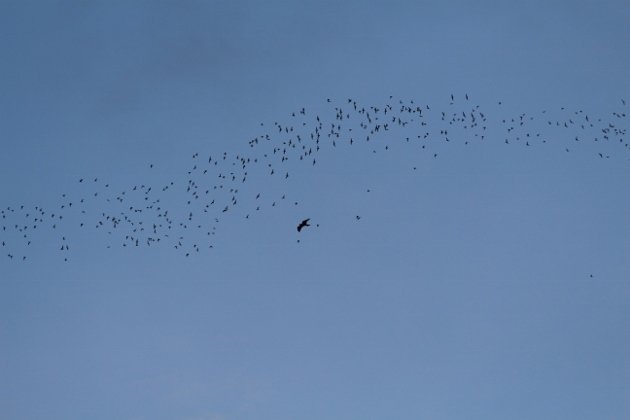 A Bat Hawk hunting bats. Awesome.
A Bat Hawk hunting bats. Awesome.
Gottamong Cave is worth a visit for any birder or non-birder, even one as crippled by fear of caves as I. Be sure to drop by in the evening to get your spectacle though!

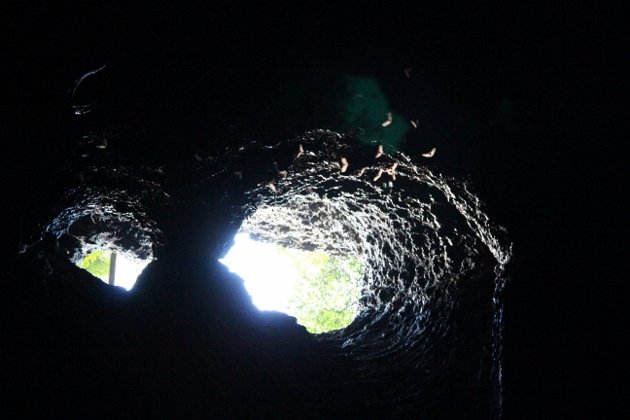










Oh darnit, Bat Hawk! One of my most-wanted birds. Missed in Africa, missed on borneo (through a lack of bat caves, I guess).
By the way, I have a different method of sorting out the swiftlets: they do look differently somehow, and if you scan through a huge flock of swiftlets and can make out three phenotypically kinds, you’ve seen them all. You may not know which is which, but so what!
Ever the pragmatist, Jochen! (smiling symbol)
Really enjoyed this posting — thanks for it.
Thanks for a very interesting post! If I ever make it to Borneo, I’ll definitely stick to parking lots for my birding, and avoid all caves.
“But mostly there was shit and cockroaches and malevolent long legged centipede things.”
This should be on all the tourist brochures.
Love this post.